| Srl | Item |
| 1 |
ID:
080440
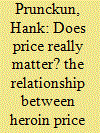

|
|
|
|
|
| Publication |
2007.
|
| Summary/Abstract |
This study determines the relationship between the black market price for heroin and its corresponding purity in Australia for the period from July 1996 to June 2003 (seven years). The study used regression and correlation analyses to test the relationship between the two variables. If a negative relationship was found, then it would suggest that law enforcement operations were effective. However, the study determined that there was a near-zero correlation (r = 0.02) at commercial level (i.e. weights of one ounce) but a moderate relationship (r = 0.37) at user level (i.e. weights of 1 g). From this it was concluded that Australian law enforcement operations targeting commercial quantities were neither effective nor ineffective; but operations targeting street-level users were noticeably ineffective. To improve success at both levels, the study put forward the proposition that more aggressive enforcement operations in front of the international Customs barrier may be needed
|
|
|
|
|
|
|
|
|
|
|
|
|
|
|
|
| 2 |
ID:
183947
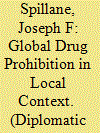

|
|
|
|
|
| Summary/Abstract |
Cairo’s Qasr El Aini Hospital regularly received opiate addicts in poor health, but a startling new development in April 1929 captured the attention of Dr. Alexander Gordon Biggam, Director of the Medical Unit. Patients with a history of injecting heroin were being admitted with high fevers, and diagnored with falciparum malaria. Shocked by the prevalence of the disease, which appeared confined to networks of injection drug users, Dr. Biggam hypothesized—correctly—that the disease was being spread through contamined blood in shared syringes. “If the theory of the production of this malignant malarial infection amongst the heroin addicts is correct,” he concluded, “we are faced with a problem of considerable importance to the inhabitants of Cairo.”1 In the winter of 1932, a similar novel outbreak of malaria among injecting heroin users occupied Dr. Guy Henry Faget, an Assistant Surgeon at the United States Marine Hospital in New Orleans, a facility serving primarily merchant seamen. “If the hypodermic syringe must be accepted as a means of conveying malaria among narcotic addicts,” Dr. Faget warned, “then a new chapter in the epidemiology of this disease has been opened.
|
|
|
|
|
|
|
|
|
|
|
|
|
|
|
|
| 3 |
ID:
129628
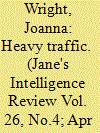

|
|
|
| 4 |
ID:
179121


|
|
|
|
|
| Summary/Abstract |
The term ‘amaphara’, possibly derived from ‘parasites’, burst into South African public culture in the 2010s to refer to petty thieves addicted to a heroin-based drug locally called whoonga/nyaope. Drawing on ethnography and media sources to interrogate the rise of ‘amaphara’, this paper argues that South Africa's heroin epidemic magnifies the attention – criticism but also sympathy – directed toward marginalised black men who have few prospects for social mobility. It locates amaphara in the national context where drug policy is largely punitive and youth unemployment rates are painfully high, but gives particular attention to families’ and communities’ experiences with intimate crimes, especially petty thefts. It further shows that amaphara is a contested term: heroin users are brothers, sons and grandchildren and they gain most of their income not from crime but by undertaking useful piece work in communities.
|
|
|
|
|
|
|
|
|
|
|
|
|
|
|
|
| 5 |
ID:
091990
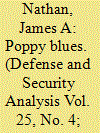

|
|
|
|
|
| Publication |
2009.
|
| Summary/Abstract |
In 2002, facing a fast-rising tide of Afghan opium, the Bush Administration's response seemed puzzling. Apparently, the CIA was well aware their Northern Alliance partners had financed themselves by selling opium and herion. The labs and store houses of Afghanistan would have been sensible bombing targets if Afghanistan were to be made anew.
|
|
|
|
|
|
|
|
|
|
|
|
|
|
|
|
| 6 |
ID:
075705
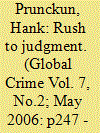

|
|
|
|
|
| Publication |
2006.
|
| Summary/Abstract |
This paper reassesses the origins of what has been referred to as the Australian "heroin drought." It looks at the theories that circulated in drug policy circles immediately after the supply shortage was discovered in 2001. It concludes that there may have been a "rush to judgment" as these inferences were based on unsatisfactory data. As such, none of the theories that were advanced at the time hold true - the shortage was almost certain to have been the result of a Taliban- enforced reduction of Afghanistan grown opium. As interdiction strategies were one of the main theories for the shortage, this might seem disappointing, especially as supply reduction strategies struggle to maintain relevancy against a growing shift to demand reduction and harm reduction strategies. But this situation should not be the case - drug seizures should not be hailed as law enforcement's central strength in this or any other situation. Instead, the strong point of policing should be seen as the broad approach it takes to reduce crime through its attack on all criminal enterprises, not just its assault on a particular criminal sector - like the drug trade
|
|
|
|
|
|
|
|
|
|
|
|
|
|
|
|
| 7 |
ID:
053267


|
|
|
|
|
| Publication |
Jan-Mar 2000.
|
|
|
|
|
|
|
|
|
|
|
|
|
|
|
|
| 8 |
ID:
103966
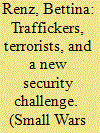

|
|
|
|
|
| Publication |
2011.
|
| Summary/Abstract |
The collapse of the Soviet Union precipitated the massive expansion of drug use and trade in Russia. The country now has one of the largest populations of injecting drug users in the world and has become the largest single-country market for Afghan heroin. In 2003 the Federal Service for the Control of the Drugs Trade was created to coordinate a comprehensive counternarcotics strategy appropriate to the scale of this threat. The service continues to face a number of challenges in its early stages of development. However, it has made considerable advances in improving responses to large-scale organised crime and in building international cooperation.
|
|
|
|
|
|
|
|
|
|
|
|
|
|
|
|